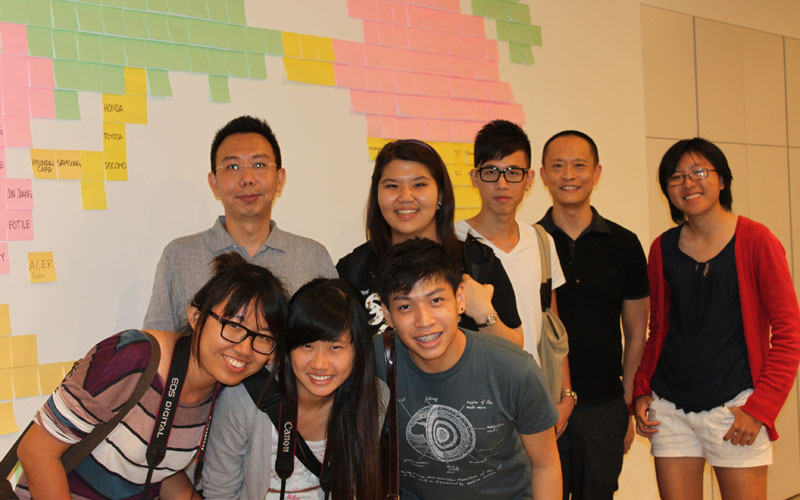Education News: DOA from NUS led a summer programme trip in China
National University of Singapore, Department of Architecture (hereinafter referred to as NUSDOA) hosted a Summer Programme in China from 9 July 2012 to 25 July 2012 for six students names Zhang Yiming, Chow Zhaoyu Jaden, Tng Wenhao Isaac, Chia Sweejun, Lin Ruijun and Baey Yanling. These six students, led by a faculty member from NUSDOA, Professor Thomas Kong, are participated in cultural activities and architecture design exposure in Shanghai and Suzhou. Some of the local visits and cultural activities in Shanghai and Suzhou were organised and arranged by National University of Singapore Suzhou Research Institute (hereinafter referred to as NUSRI).

Students felt that the trip to Shanghai and Suzhou for them has really been an eye-opening one, not just for the architecture, but also for the people who are so innovative in their own ways and in their own environment regardless of how poor the conditions are. Just like one old lady who students met at Tongli water town said, "what makes one rich is not how much money or how many properties one has, what makes one truly rich is how happy one is and how one lives his/her life to the fullest".
One of the students Zhang Yiming wrote below thoughts after the trip:
“Our Overseas Enrichment Programme consists of two parts, conducting research in Shanghai and designing an integration that can be implemented in SIP, Suzhou. While architecture is certainly the main focus of the trip, but what really stroke me at first in these two cities was how the people interact with spaces. Architecture no longer has to be confined in a certain physical space. Instead, the people dwelling in the space become their own architects and start to design their own micro scale environment, redefining the function of many most unexpected areas. For example, an empty clearing at the river can be used as an outdoor living room for household staying along the riverbed or a bridge under the canopy of trees can easily become the best spot for elderly play chess. I have totally enjoyed discovering these kinds of little surprises while visiting the older towns such as Zhujiajiao in Shanghai and Tongli in Suzhou.
However what has disappointed me was the development of the new towns in these two cities. While the living conditions are indeed much better than that of old towns, I personally feel that the essence of the city which is so apparent in the older towns is lost. No longer can I find the pockets of surprises. Instead, certain structures are forcefully implemented without much consideration for their functions. A good example is the Thames Town in Shanghai. While the aesthetic aspect is almost perfectly designed to resemble an authentic English town, there seems to be no Shanghai identity incorporated at all. Personally I feel it is not more suitable as a tourist or wedding photo taking site rather than a dwelling community for people of Shanghai. I hope such issues will be highlighted and addressed especially since more and more newly developed towns are becoming "ghost towns".
Another important lesson for me during this trip is that landscape is also a very important element in architecture. Suzhou, also known as Venice in the East, boasts of its most scenic landscape, be it along the river or in the famous traditional gardens. This is indeed proven so after we have visited a few of the most famous gardens in Suzhou. I have never known that every element of the garden is there for a reason and has a certain symbolic meaning to it. Prior to the trip I have always felt that Chinese gardens are all similar somewhat and visiting one is enough to understand them. However, after understanding the hidden meanings of certain implementations of the garden, I start to realize each garden has its own personality and it tends to reflect the personality of the dwellers who used to stay in them. Hence I started to feel the garden, instead of visually taking it in, and then imagined how the past residents had interacted with the space.
Architecture is not just about buildings, rooms or spatial experience which we always emphasize in school. We have to see beyond them and understand that it is in fact a network of ecologies that invoke emotions within us. This, to me is the most valuable lesson that I have learnt during this trip. ”




